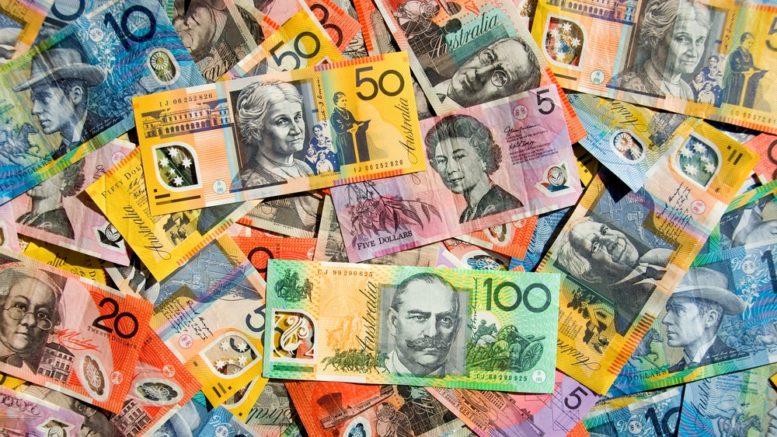Contributed by Joe Montero
The news that last year saw the largest increase of billionaires in Australia ever, is making the rounds. Their number has more than doubled over the past decade and was up by a third last year alone. The the like of it has never been seen before.
Many people consider this unfair, especially when wages growth is stagnant and the gap between the haves and have nots is widening. The perception is justified. When this happens at a time of almost no economic growth, something must be wrong. The money must still be coming from somewhere, and the only other option is that others are going without. The rest of us are paying to make existing billionaires wealthier and for the creation of new billionaires.
This is not about innovation and creating something new. It is about income redistribution.
Major contributors have been the reorganisation of work through casualisation and the massive corporate tax evasion system. Both have blown out in recent times and have seen seen the big shareholders in major companies receive higher dividends as a result. Then there is the property bubble.
These three contributors have been around for a long time, and although they are important, there must be even more, to explain why the sudden jump last year. The best place to look for an explanation for this is to follow the money trail.
A big part went to the mining industry. This is curious, because global ore prices are depressed and the sector is in decline. So what is going on?
A study commissioned by GetUp, resulted in a new paper from the Australia Institute. It reveals that the industry has enjoyed $4 billion in tax breaks each year and this is likely to be a significant under estimation. Not all all if the information is available. Nor does not include what is being given to the non-fossil fuel mining industry.
The generosity is not being used to produce more output. According to Trading Economics, there was only a negligible rise last year, from a very low base.
The banks and broader finance industry have not missed out on the handouts. They are getting even bigger government subsidies than the mining companies, up to to $5 billion a year.
It happens that they are major shareholders in the mining companies and a significant share of their funds are pumped into them. Both industries are dominated by foreign based investors according to a Reserve Bank of Australia report (2011) . This has not changed and the big four Australian banks serve as an important conduit for share ownership.
The banks don’t only buy shares, they loan out money and get it back with added interests. This is how they make their profits. In previous financial year, they boosted their loans to the fossil fuel industry alone, providing $7.5 billion for a list of projects. A cursory look at the annual reports of the banks, shows that their investment in the non-fossil fuel mining sector is also big.
The upshot is that the banks and finance corporations take a share share of the subsidies handed out by government to the mining companies, and this comes from those who actually pay their taxes.
Banks and finance corporations also profiting is from the real estate bubble. They finance it, in return for interest earnings. Some of it does go towards the construction of new buildings adds to economic growth. But much of it goes to feed the bubble. Prices have shot through the roof, as a result of financing speculation.
They profit from the mortgage burden post on home buyers. A big part of housing finance, however, goes to corporations using property as a vehicle to profit from their ability to push up prices, milk generous negative gearing provisions and manipulate capital gains exemptions as a tax avoidance mechanism.
Research by the Grattan Institute in 2016, found that negative gearing alone was costing Australians $17 billion a year.
Other than the government handouts and shares, profits made by banks and finance corporations come through the provision of credit. As the proportion of real income going to the bulk of the population declines. The greater the reliance onl debt, the higher the profit.
Last year, household personal debt rose to a new record, shooting past 190 percent of household income. The four banks took in more than $31 billion in profit.
A study by Caroline Freund and Sarah Oliver from the Washington-based Peterson Institute for International Economics, was concerned with where rising billionaires around the world are making their fortunes. They found that in Australia 31 percent of all Australian US dollar billionaires in 2014 made their fortunes from finance and property.
Last year, Fortune reported that fortunes made from these sources had suddenly jumped to a higher level, and is particularly marked when it comes to the new billionaires.
Australia is one of the best countries to make money through political connections. Coming in just behind Colombia and India, according to an investigation by Bagchi and Svejnar (Washington Post). It pays to have mates in the right places. This adds corruption as a further element.
This is enough evidence to warrant a major overhaul of the Australian economy and the way the financial system is operating. Without this the income gap will continue to widen and a small handful will continue to rob us blind. They are leaches, sucking up the lifeblood of our economy and society. It must be stopped.


Be the first to comment on "The leap in the number of billionaires in Australia is not good news"